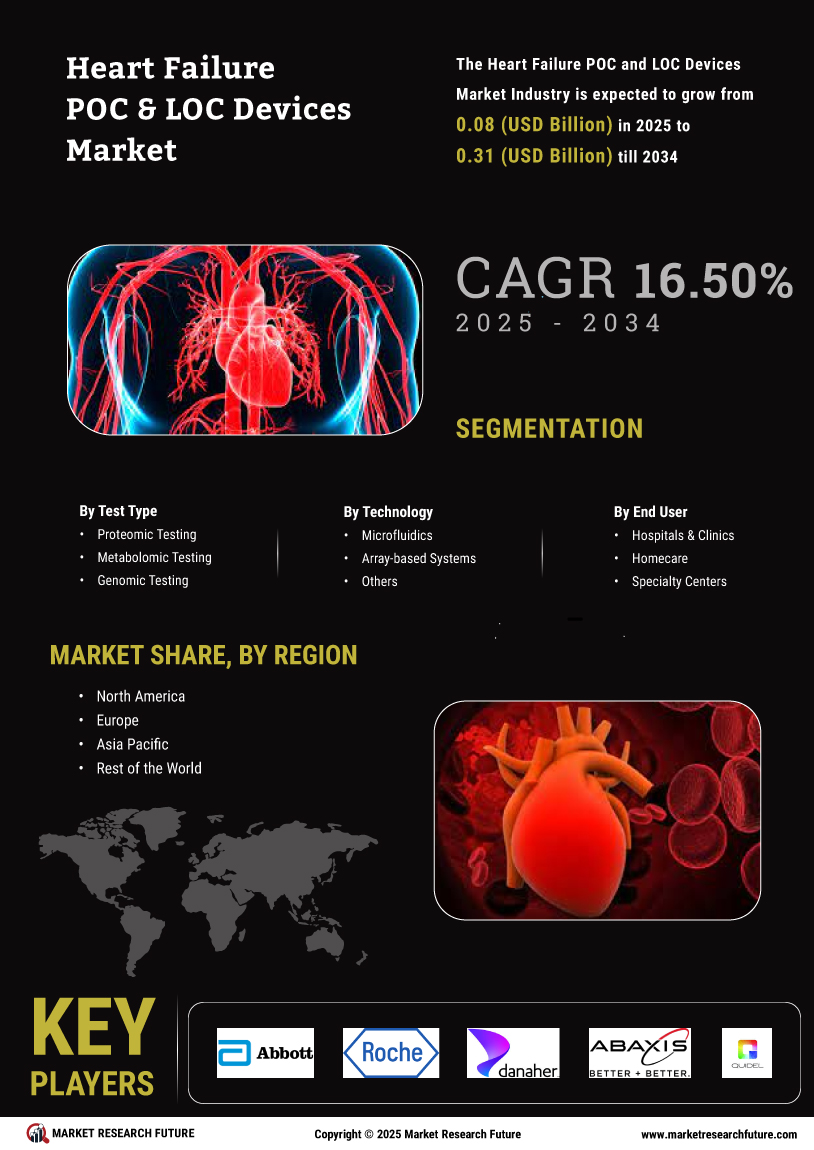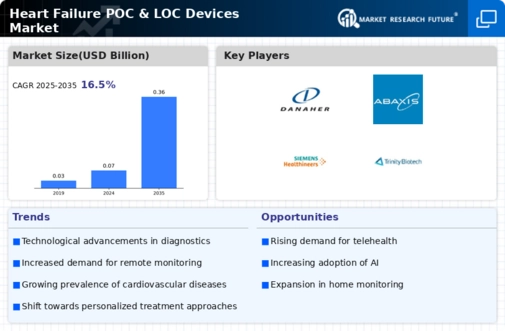Leading market players are investing heavily in research and development in order to expand their product lines, which will help the heart failure POC & LOC devices market, grow even more. Market participants are also undertaking a variety of strategic activities to expand their footprint, with important market developments including new product launches, contractual agreements, mergers and acquisitions, higher investments, and collaboration with other organizations. To expand and survive in a more competitive and rising market climate, heart failure POC & LOC devices industry must offer cost-effective items.
Manufacturing locally to minimize operational costs is one of the key business tactics used by manufacturers in the heart failure POC & LOC devices industry to benefit clients and increase the market sector. In recent years, the heart failure POC & LOC devices industry has offered some of the most significant advantages to medicine. Major players in the heart failure POC & LOC devices market attempting to increase market demand by investing in research and development operations include Abbott (US), F.
Hoffmann-La Roche Ltd. (Switzerland), Danaher (US), Abaxis, Inc. (US), Quidel Corporation (US), Siemens Healthineers (Germany), JantPharmacal Corporation (US), Trinity Biotech (Ireland), bioMérieux S.A (France), and Instrumentation Laboratory Company (US).
A division of Siemens AG, Siemens Healthineers AG (Siemens Healthineers) is a manufacturer and distributor of diagnostic imaging systems, clinical and workflow systems and solutions, and systems for minimally invasive treatments. The company's key products include mobile C-arms, hybrid operating rooms, angiography systems, ultrasound systems, computed tomography systems, magnetic resonance imaging systems, testing systems, and point-of-care (POC) testing systems. In April 2021, the AtellicaVTLi Patient-Side Immunoassay Analyzer from Siemens Healthineers has acquired CE mark clearance and can be used as a point-of-care diagnostic to help diagnose heart attacks.
Abaxis Inc. (Abaxis) is a provider of technology, tools, and services for a variety of medical applications for the care of patients in both human and veterinary settings. The company's primary areas of interest include developing, producing, and marketing portable blood analysis systems. Its portfolio includes patented goods like chemistry analyzers, reagent discs, blood gas and immunoassays, haematology analyzers and reagent rotors. Multiple tests are run on blood, serum, or plasma using the Abaxis laboratory system. The company distributes goods in the US through a network of independent distributors in the Asia, Americas, Europe, the Middle East, and Africa.
















Leave a Comment